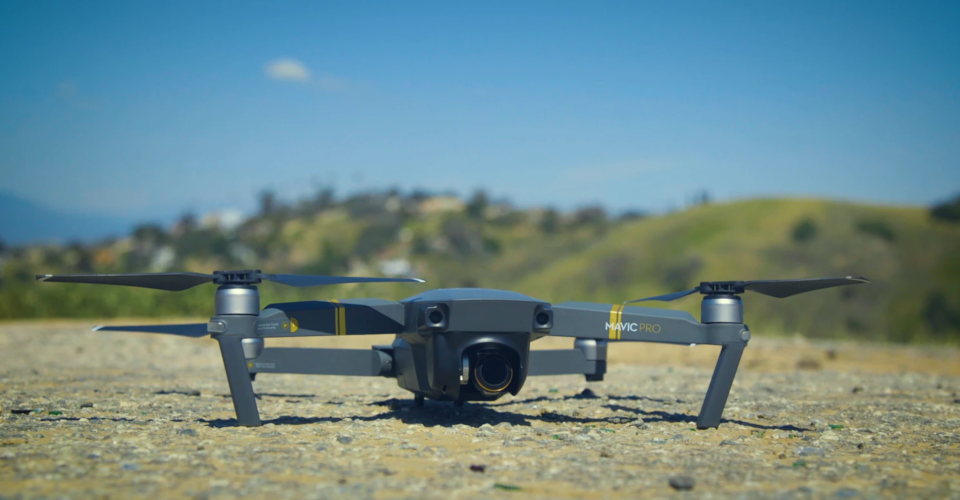10 Tips to Avoid Crashing Your Drone
Everything that goes up must come down. That is true for everything, including that fancy drone you spent hundreds or thousands of dollars on. What really matters is that you let your drone drop in a controlled manner. Otherwise, an uncontrolled drop is what we would call a crash.
A crash is just about one of the biggest fears of a drone pilot. Aside from inevitable damage to the drone, a crash can even cause injuries to people on the ground or damage to someone else’s property. To avoid the stress of dealing with a drone crash, here are some of the pre-emptive measures you can take.
1. Fly only in good weather
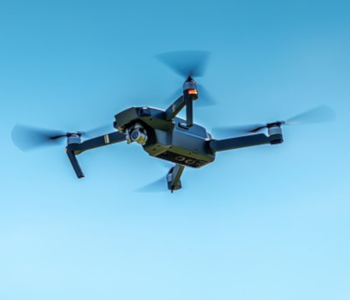
The first thing to consider when going out for a drone flight mission is the weather. Ideally, you will want to fly your drone on a day with clear skies, no strong winds, good visibility, no precipitation, and mild temperatures. Despite being sophisticated pieces of technology, drones are still small and light enough to get knocked out of the sky by a strong wind or get damaged by a bit of rain.
Even if weather conditions don’t immediately result in a crash, certain factors can still make it difficult for you to fly your drone safely. A sudden loss in visibility due to fog or clouds can make it very hard for you to retrieve your drone. A strong wind is particularly problematic if you have to fly against it, especially if you’re trying to get back a drone with a dwindling battery level.
More than relying only on your senses, it would also be a great idea to check the weather forecast for the day of your flight. Take heed of the forecasted chance for rain and the speed of wind gusts. If wind gusts of 15 MPH or higher are expected, take extreme precaution – winds at that speed can easily cause your drone to go off-course or lose lift.
2. Fly with a spotter
As the drone pilot, you will be expected to keep your eye on the drone at all times. In reality, this is an almost impossible outcome. You will inevitably need to look at your controller’s visual display to check telemetry data or your drone’s battery level. You might also get distracted by other people or objects on the ground.
To ensure that you always have eyes on your drone, it’s always a good idea to fly with a spotter or a visual observer. This person has no other responsibility but to maintain visual line of sight with the drone. They can also scan the skies for potential obstacles such as power lines, tree branches, or birds.
3. Be familiar with your surroundings

Exploring new places is always fun and exciting, especially if you’ve got a drone on hand to record your experience from a unique and unusual perspective. However, we recommend doing a quick survey and assessment of any area before flying your drone, preferably in broad daylight.
The idea behind the prep work is to identify potential obstacles in the area, both in the air and on the ground. Power lines, tree branches, and wires may not be instantly visible, especially if you’re focused on flying your drone. You may also want to take note of bodies of water, people on the ground, or any homes in the immediate surroundings. If you’re not someone who’s known in the area, then it wouldn’t hurt to give the people there a heads up that you’ll be flying a drone just so you don’t get cops called on you. Just as with any undertaking, a healthy dose of preparation is never a bad thing.
4. Do a pre-flight inspection
Just as important as making sure that the weather and your surroundings are safe for drone flight, you will also want to check that your drone is in a condition that’s fit to fly. There are probably more than a dozen things you can check. Many drone pilots have come up with their own pre-flight inspection checklists, so they don’t miss out on anything.
To help you get started with your checklist, here are a couple of tips. The easiest things to watch out for are cracks on the propellers, loose wires, bent or cracked propellers arms, or unsecured battery packs. Beyond these, you’ll have to check for less obvious things – discharged batteries, poor GPS reception, or a compass or IMU that needs recalibration. The important thing is to come up with a routine that ensures safe drone flight and to stick to that routine.
5. Always fly with a fully charged battery
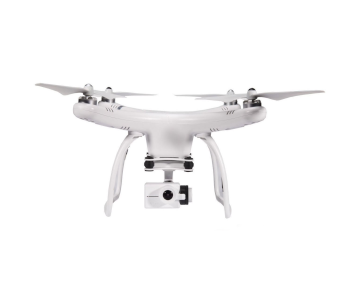
Power failure is one of the most common causes of drone crashes. Yes, most drones will come with a Return to Home (RTH) feature that will automatically activate once the battery has reached critical levels. However, we do not recommend always relying on the RTH feature to save your drone. As we shall see later, there are a lot of things that can go wrong when trying to retrieve your drone via RTH.
For best results, we recommend always starting your drone flight mission with a fully charged battery. Not only is this inherently safer, but it also ensures that you get the most out of your drone every time you take off.
6. Find a level and stable take-off and landing spot
Just as with manned aircraft, taking off and landing can be some of the most dangerous moments of flying a drone. Shortly before taking off, your drone will calibrate the sensors that help it maintain its position and altitude. For this calibration to happen correctly, you will need to give your drone a stable and level take-off spot.
There are also a lot of things that can go wrong if you choose an unsuitable landing spot. Dust or sand can get kicked off by the propellers, and these small particles can mess with your drone’s electronics. Uneven terrain can damage your drone’s camera and gimbal, especially if they are located on the underside of the drone.
To avoid such accidents, we recommend using a landing pad. A good landing pad provides a visible marker for the take-off and landing spot while keeping the ground perfectly leveled and protecting the drone from loose debris.
We also suggest taking it slow when taking it easy when taking off, even if you use your drone’s automatic take-off feature. Let the drone hover in place just one or two meters off the ground just to see if there’s anything wrong with its sensors or your control. A crash from this altitude would be negligible compared to one that could happen from hundreds of feet in the air.
7. Avoid flying near objects that generate magnetic interference
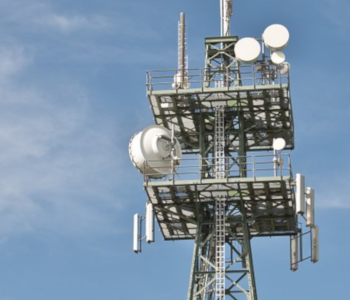
Magnetic interference is the bane of all electronic devices. This is especially true when it comes to drones. The most common result of magnetic interference in drones is a loss of communication with the remote controller. This means a loss of video transmission to your visual display and a drop in controller responsiveness. It’s not hard to imagine how these factors can quickly lead to a crash.
To avoid magnetic interference, the first thing you need to do is to identify its possible sources. Any object that generates or transmits a large amount of current will also generate electromagnetic waves that can interfere with a drone’s electronic system. This includes power lines, communications towers, or any large electronic device. Some drones are specifically designed to handle electromagnetic interference with internal shielding, but flying around these potential hazards isn’t something you should be doing unless absolutely necessary.
8. Tweak your RTH settings
Just about all modern drones come with an RTH feature. This is a feature that has your drone automatically fly back to a designated home point if its battery drops below a critical level or if it loses communication with the remote controller. While this is undoubtedly a valuable feature to keep your drone from crashing, it’s not always fool-proof.
The first thing you need to check is if your drone can get a GPS lock. This is how the drone determines where it’s supposed to fly to, should the RTH function kick in.
More importantly, you need to ensure that the RTH altitude is higher than any potential obstacles in your surroundings. This is the altitude in which the drone will fly as it makes its way back to the home point. RTH flight is automatic – the drone will take the shortest path home to ensure that it doesn’t run out of power mid-way. By dialing in the correct settings, you can make sure that your drone doesn’t inadvertently crash is it automatically flies back.
9. Don’t be over-dependent on obstacle detection sensors
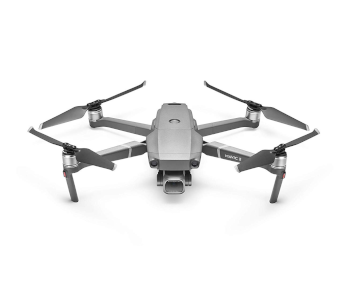
Just to be clear, we think the modern obstacle avoidance systems are great. They allow a drone to fly automatically while weaving in and out of obstacles. We’ve seen so many examples of drone pilots taking advantage of autonomous flight modes coupled with good obstacle detection and avoidance.
The problem lies in drone pilots relying too much on obstacle detection sensors to keep their drones from crashing. Keep in mind that obstacle detection sensors are not omniscient. They can miss out on very small obstacles like wires or thin tree branches. A lot of them rely on optical detection, which can be problematic if there’s poor visibility.
Our point is that an obstacle detection system is no replacement for a good pair of eyes and a conservative flight strategy. If there are lots of obstacles around, then fly slowly and carefully. An obstacle detection sensor is just a back-up – an emergency measure for when you lose control of your drone or if there are obstacles you had not anticipated. Don’t rely on them to keep your drone from crashing every single time.
10. Don’t fly near large groups of birds
When you scope out a location for a drone flight mission, there is one other thing you need to watch out for – birds. Getting your drone attacked by a group of birds is a bit of a double-edged sword. On one hand, there’s the risk of your drone getting knocked out of the sky or snatched, eventually resulting in a crash. On the other is the very serious risk of your drone causing lacerations on the birds. Of the two, the latter is arguably a more serious outcome.
To avoid incidences with birds, there are a few measures that you can take. The first is to avoid nesting locations. Birds in these places can be particularly protective of their young. You will also want to avoid areas that are rich with prey. Predatory birds, such as hawks or eagles, will not hesitate to attack your drone.
Birds typically hunt in the late morning to afternoon, giving you a small window in the early morning to fly your drone without their interference. No matter the time, it is always a bad idea to fly your drone during the mating season.
BONUS: Get drone insurance

Here’s the truth about drone crashes – they happen even to the most experienced drone pilots. More than just taking precautions against drone crashes is having measures in place should they happen. This just about describes drone insurance or liability insurance.
Just like any type of insurance, the purpose of drone insurance and liability insurance is to protect you from financial obligations. There’s a key difference between the two: drone insurance will provide compensation should your drone get damaged, while liability insurance will provide financial support to compensate for any personal injury or property damage that may have been caused by a drone-related accident.
For complete protection, we suggest that you get both. Fortunately, drone flight has become so common that even old-fashioned insurance providers now offer products that are specifically made for drone pilots. The costs of getting insurance may be significant, but the peace of mind that a good insurance plan can provide is priceless.
Final thoughts
Getting into a drone crash will probably make to the top three worst things that can happen to a drone pilot. However, it’s an almost unavoidable outcome of drone flight, whether you do it professionally or for fun. Recognizing this danger is step one of avoiding it. Step two is making actual measures to avoid a drone crash.
The list we have come up with is a good place to start coming up with your own safety measures. This list is not exhaustive – other drone pilots can easily make another list of ten safety measures to add to this one. In any case, there are a few fundamental principles central to avoiding a drone crash – preparation, prudence, and a conservative approach to drone flight.

